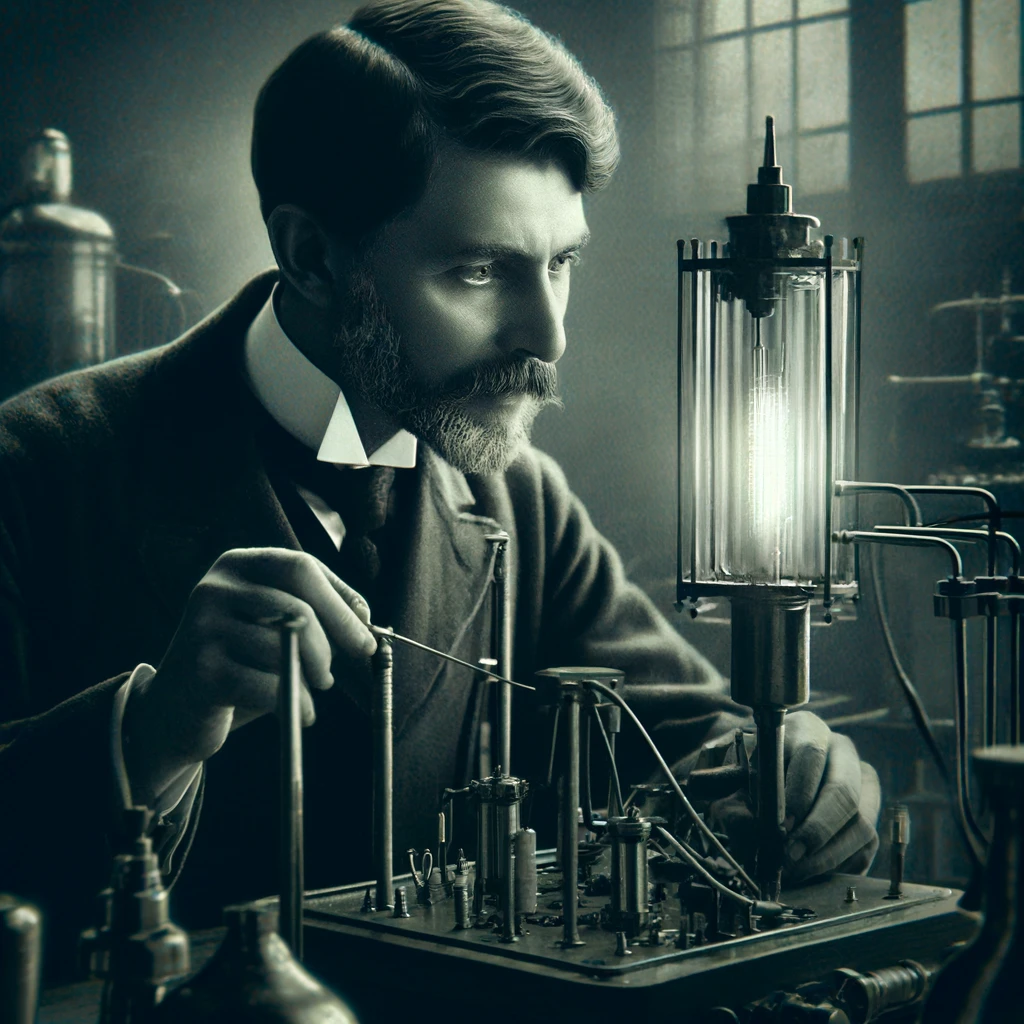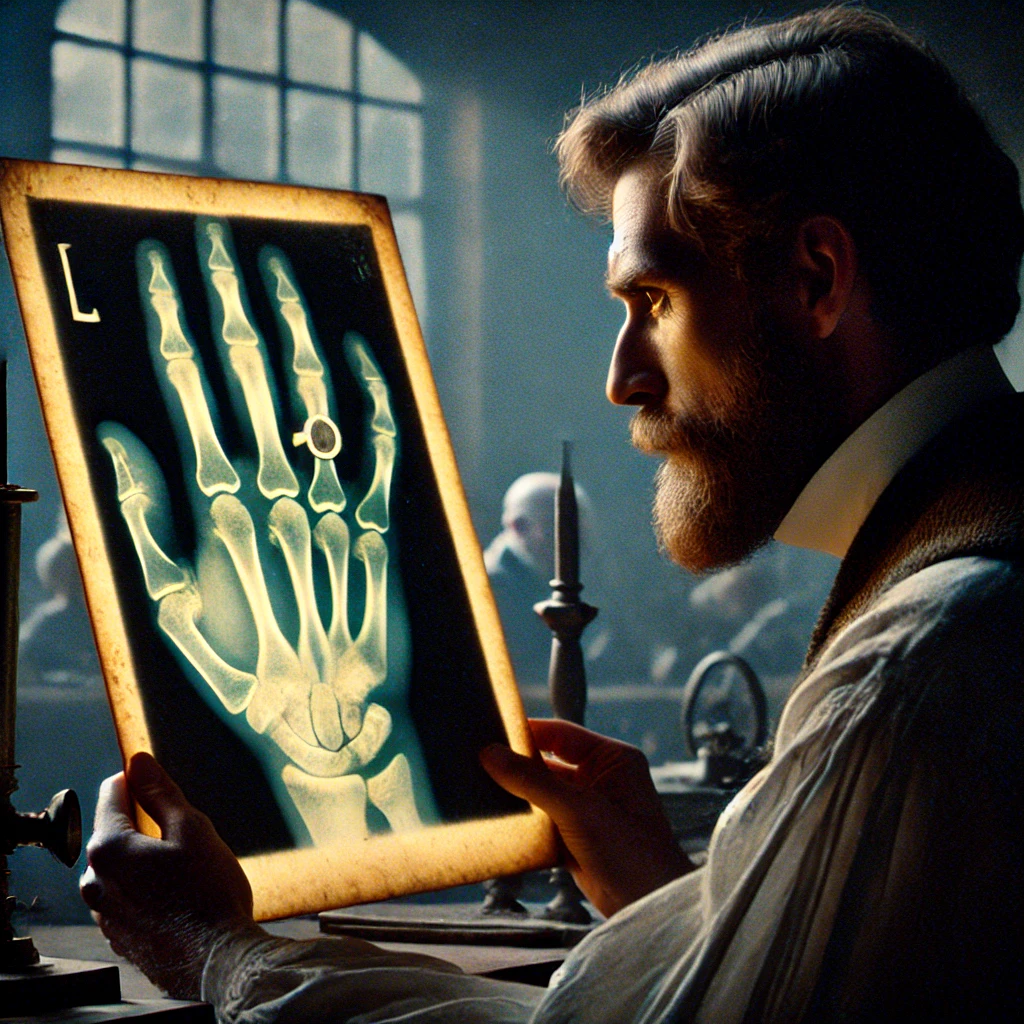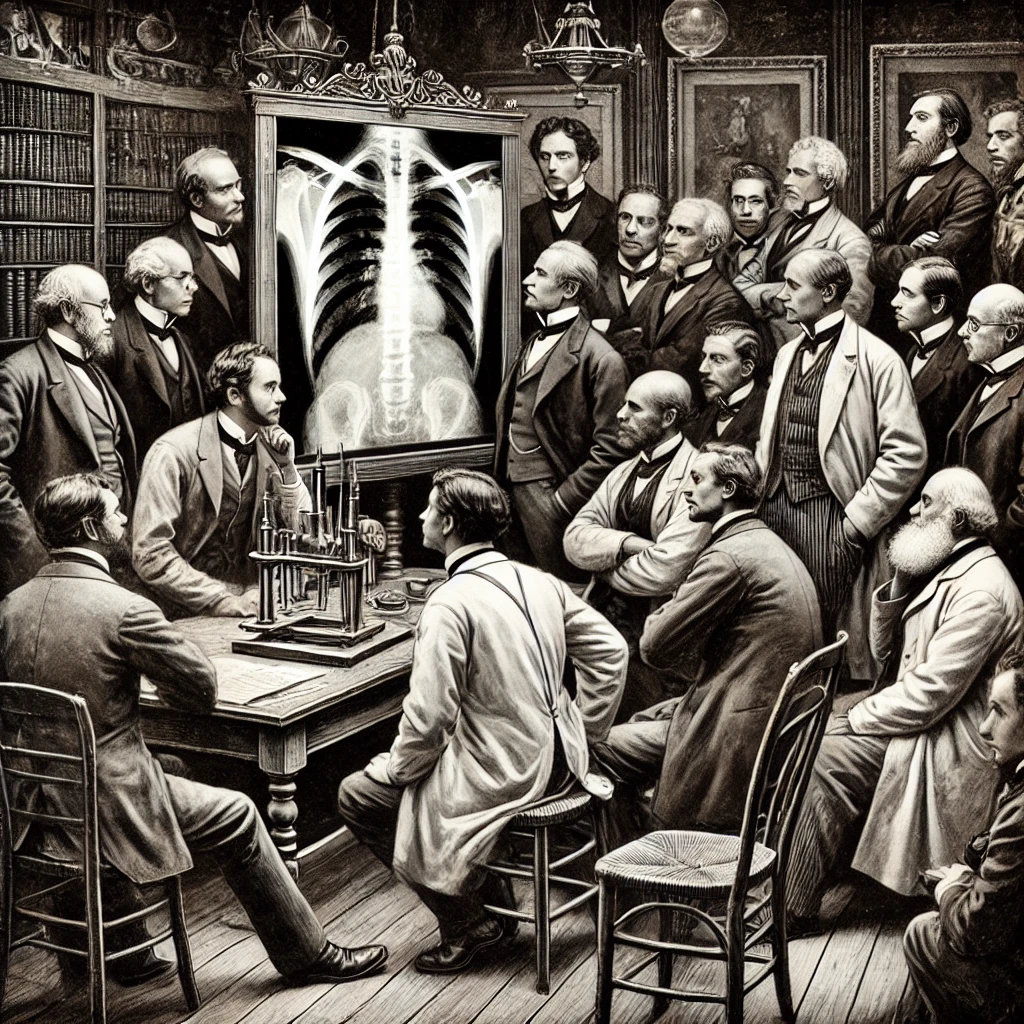On November 8, 1895, German physicist Wilhelm Conrad Röntgen made a groundbreaking discovery that would revolutionize medicine and science: X-rays. This remarkable achievement not only advanced the field of medical imaging but also paved the way for diagnostic techniques that have saved countless lives. Röntgen’s discovery transformed our understanding of the human body and set the stage for future innovations in healthcare.

The Moment of Discovery
Röntgen’s journey into the world of X-rays began during his experiments with cathode rays. While working with a Crookes tube, he noticed that a nearby screen coated with barium platinocyanide began to glow, even though it was not in the direct path of the cathode rays. Intrigued by this phenomenon, Röntgen hypothesized the existence of a new type of radiation, which he later named “X-rays,” with “X” denoting an unknown quantity.
On that fateful day, Röntgen conducted further experiments and successfully captured the first X-ray image, which displayed the bones of his wife’s hand, complete with her wedding ring. This landmark moment marked the birth of a new era in medical imaging, enabling doctors to see inside the human body without invasive procedures. Röntgen’s discovery not only showcased the potential of X-rays but also emphasized the importance of scientific inquiry and exploration.

Lasting Impact on Medicine
The implications of Röntgen’s discovery were profound. X-rays quickly became an essential tool in medicine, revolutionizing the diagnosis and treatment of various conditions. Their ability to provide clear images of bones and internal organs transformed surgical practices and allowed for earlier detection of diseases, including fractures and tumors.
Röntgen was awarded the first Nobel Prize in Physics in 1901 for his groundbreaking work, cementing his place in scientific history. The legacy of his discovery continues to resonate today, as X-ray technology has evolved to include advanced imaging techniques such as computed tomography (CT) and digital radiography. Röntgen’s work laid the foundation for a field that has had a lasting impact on healthcare, improving patient outcomes and shaping the future of medicine.

Wilhelm Conrad Röntgen’s discovery of X-rays on November 8, 1895, marked a pivotal moment in the history of science and medicine. His innovative spirit and dedication to research opened up new possibilities for understanding the human body and diagnosing illnesses. As we reflect on this significant event, we recognize the transformative power of scientific discovery and its enduring influence on our lives and healthcare practices today.
